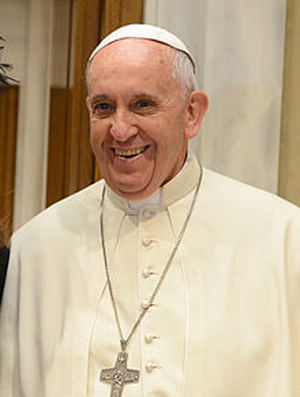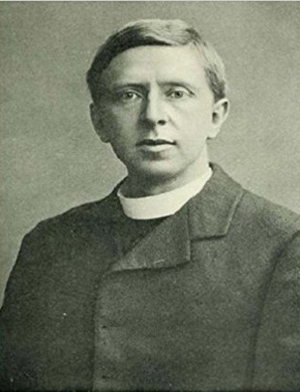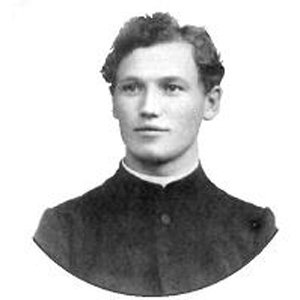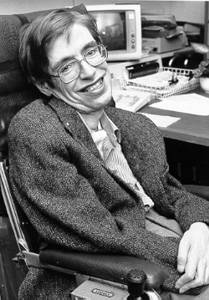|
|
|
 |
Pope Francis and the Atheist: What is Hell?
Posted on 23 April 2018, 7:58
Although the Vatican denies that Pope Francis (below) recently told Eugenio Scalfari, an Italian newspaper publisher, that hell doesn’t exist, my guess is that the pope actually beat around the bush on the subject and likely implied that very thing in the private interview, which was not recorded by Scalfari. I suspect that the pope really does question the reality of hell, at least the hell of orthodox Christianity, and that he would like to see it undergo a complete makeover.

Clearly, the hell of orthodoxy – one of fire and brimstone in which sinners go for eternity – just doesn’t fly with rational people, as it can’t be reconciled with the fair, just and compassionate God the churches have passing judgment on those supposedly cast into that horrific place. No matter how the churches try to justify their strict biblical interpretations of it all, God still comes out of it as cruel, capricious and vindictive, much like one of the “hanging judges” of the Old West.
The religious message, though varying among denominations, is that a person will spend eternity in hell if he or she doesn’t choose the right savior, or if he or she doesn’t repent in a very timely manner. A person might lead a virtuous or “righteous” life, but if he worships the wrong savior or commits a grievous sin just before his death, with no opportunity to repent, his fate in hell is sealed. On the other hand, a person can lead a very wicked life but can be “saved” on her or his deathbed by “finding” the right God and properly repenting. Much depends on luck or being in the right place at the right time. How just is all that?
Of course, heaven needs a complete overhaul as well, since floating around on clouds, strumming harps, and praising God 24/7 for eternity simply is not all that appealing. To many, total extinction seems preferable to such a humdrum existence. This dichotomous black and white afterlife preached by the churches has to be the biggest obstacle to believing in life after death. I think the pope realizes all that, but for him to say that the Catholic Church had it wrong so many years is for him to say that all his “infallible” predecessors were actually fallible, and it would undermine the authority and other teachings of the Church. In effect, he is caught between a rock and a hard place.
In defense of the pope and the horrific hell subscribed to by the Catholic Church and most of Christianity, The Tablet, the International Catholic News Weekly, stated, in a March 31 release, that the pope “is heavily influenced in this regard by a novel featuring the Antichrist,” which confirms the existence of hell. It is difficult to believe that the pope or Church authorities would let on that a novel influences his thinking, but the article identified the piece of fiction as Lord of the World, authored by Monsignor Robert Hugh Benson, (below) the son of a former Archbishop of Canterbury. Benson was an Anglican vicar who created quite a stir when he converted to Roman Catholicism in 1903. His novel was published in 1907.

I doubt that the pope knows the rest of the Benson story, that involving Anthony Borgia, a British medium who purportedly recorded many after-death messages from Benson, who died in 1914. As Benson explains it through Borgia, he found that after his death many of the views he expressed in his books, including The Necromancers, published in 1909, gave a distorted view of the spirit world, including spirit communication, and he was hoping to set the record straight through Borgia’s mediumship.
“The whole fantastic doctrine of hell-fire – a fire which burns but never consumes – is one of the most outrageously stupid and ignorant doctrines that has ever been invented by equally stupid and ignorant churchmen,” Benson communicated through Borgia, describing the lower realms as nothing but a cold, dank atmosphere, its inhabitants seemingly listless and lost in the darkness. They are not being punished by the God they mocked, he reported, but rather they are punishing themselves.
The skeptics and the fundamentalists of religion scoff at the whole idea of such mediumship and claim that it is all fraud, the work of the devil, or perhaps the creation of Borgia’s subconscious mind. There is no way to prove it came from Benson. However, it is consistent with scores of messages that have come through various other mediums and mystics since the time of Emanuel Swedenborg, the great scientist turned mystic and clairvoyant, during the 18th century, and it is the same kind of mediumship and mysticism that gave us the Bible in the first place, even if it is more convenient for church authorities to claim it all came from God. (Did God really say to stone adulterers and adulteresses to death as set forth in Leviticus 20:10? Come on!)
Perhaps the most significant discovery by Swedenborg was the “world of spirits,” a vast intermediate region between the heaven and hell of the Protestant theology he had subscribed to, but unlike the purgatory of Catholicism, which is, or at least was before the Catholic Church backed off the subject a few decades ago, much like hell. The conditions of the spirit world that Swedenborg explored were very similar to earth, so similar that many newly arrived souls had to be told that they were no longer living on the earth plane.
Edgar Cayce, the famous American “sleeping prophet” of the last century, also told of taking a tour of many realms during one of his out-of-body experiences. He described how he encountered a stream of light he knew he must follow. In the lower or darker realms he saw “forms” that were floundering or lost and seeking the light. As the light grew stronger and stronger, he arrived at a place where individuals appeared much as they do today.
Almost without exception, the more modern revelation tells of progressive spheres or realms or planes. It is often reported that there are seven basic planes, giving some credence to “Seventh Heaven” mythology, but many of the spirits communicating claim they do not know how many planes there are because they know only of the plane on which they exist, and those below. It is further reported that the souls in the lowest realms, what might be called “hell,” are not there forever. They are able to progress to higher realms, usually with help from those in higher realms or through the prayers of those still incarnate. They eventually “see the light.”
The more modern revelation suggests we develop what has been called a “moral specific gravity” in the earth life and that determines the level at which we find ourselves after death. This moral specific gravity has also been referred to as “spiritual consciousness.” Those who fail to develop any significant spiritual consciousness during the earth life will, it is said, find themselves in the lowest realm of the afterlife and may not even realize they are dead. They likely will experience a “fire of the mind,” or an ongoing nightmare as they exist in something of a dream world. It is understandable that this “fire of the mind” became a symbolic physical reality when early artists tried to depict it and that the churches found it the easiest way to explain it all to the uneducated masses and use it as a weapon to keep them in line.
Those who developed a modicum of spiritual consciousness would, it was reported, find themselves a little higher in the realms and in sort of a stupor, in and out of a dream world, much as a person can be during a light sleep or even while absorbed in a movie. That person will likely drift in and out of the “dream” while gradually awakening. Some have referred to this second realm as the “borderland.” Above that realm we reach an existence similar to that we have in the material world, one in which there is much activity, and beyond that it begins to exceed human comprehension.
“Those of us who have returned to earth to tell about our new life are faced with the difficulty of trying to describe in terms of the earth what is essentially of a spirit nature,” Benson communicated. “Our descriptions must fall short of the reality. It is difficult to conjure up in the mind a state of beauty greater than we have experienced upon earth. Magnify by one hundred times the beauties that I have told you about, and you would still be far short of a true appraisement.”
Johannes Greber, (below) a Catholic priest living in Germany during the 1920s, began receiving communication from a spirit speaking through a young peasant boy. “If you had the complete and unamended text of Christ’s doctrines, many a load imposed by man in the name of religion and Christianity would be taken from your shoulders,” it was communicated to Greber. “Many a precept which you are expected to believe, even though it seems out of all reason, would be discarded because it would be recognized as being wrong, and you, as God’s children could again breathe freely.” The same spirit had previously told Greber that the teachings of Christ are no longer to be found in their original purity and clearness, that entire chapters have been omitted and that what we have now are “mutilated copies.”

And so what can we believe? Are all these modern day spirits “wolves in sheep’s clothing,” as orthodoxy claims? Surely we must heed the words of John to “test the spirits to find out if they are of God” (1 John 4:1) as well as those of Paul that we should be “discerning of the spirits” (1 Corinthians 12:10). But neither John nor Paul tells us how to test or discern the spirits. Seemingly, the best test or best discernment would be to ask if the spirit communication is consistent with an all-loving and all-just Creator.
By going beyond the self-imposed limits of orthodox religion, by testing and discerning the teachings of the spirits, we find a much more logical, more sensible, more appealing environment – one that can be reconciled with a loving and just God. We discover a Divine plan – one of attainment and attunement, of gradual spiritual growth, of evolution of spirit through progressively “higher” (in vibration) planes. I believe Pope Francis gets that, but he simply doesn’t know how to correct things.
Michael Tymn is the author of The Afterlife Revealed: What Happens After We Die, Resurrecting Leonora Piper: How Science Discovered the Afterlife, and Dead Men Talking: Afterlife Communication from World War I.
Next blog post: May 7
Read comments or post one of your own
|
 |
Did Stephen Hawking Fail to See the Forest for the Trees?
Posted on 09 April 2018, 8:46
The militant atheists were running wild on the Internet recently. The death of physicist/cosmologist Stephen Hawking unleashed quite a few of them. “He was the most brilliant man in the world and he was one of us,” they all seem to be proudly ranting and raving in their usual cacophony at various websites, the implication being that if Hawking (below) didn’t believe any of the religious rubbish then you can be certain that it is all bunk. However, I’ll go with another great scientist, physicist Sir Oliver Lodge, a pioneer in electricity and radio, who said, “Science is incompetent to make comprehensive denials about anything. It should not deal in negatives. Denial is no more fallible than assertion. There are cheap and easy kinds of scepticism, just as there are cheap and easy kinds of dogmatism.”

The militant atheists seem to assume that if God can’t be seen in a telescope or microscope that He, She, or It, whatever God happens to be, can’t exist. They further assume that any God must be the anthropomorphic (humanlike) God of religion and that an afterlife can’t exist without such a God. They seemingly don’t stop to consider that an afterlife might exist without the anthropomorphic God of religion.
Ask the militants to forget the question of God and closely examine many cases suggesting survival, such as those set forth in One Hundred Cases for Survival after Death, edited by A. T. Baird, and they’ll just guffaw and say none of it is scientific. They claim fraud, delusion, hallucination, wishful-thinking, anecdotal, whatever works best for them, or they refer you to a Wikipedia page which is usually written by another militant atheist who claims that the particular person or case is just so much hogwash. They’ve been brainwashed in scientism and are at the other extreme from the fundamentalists of religion.
Yes, the cases set forth in Baird’s book, which was published in 1944 and has now been republished by White Crow Books, are anecdotal and holes of one kind or another can be poked in each case, leaving some room for a doubt, but as Professor Lodge said, it is the cumulative evidence that provides conviction.
Consider Case No. 60 in Baird’s book, having to do with Lodge’s investigation of Boston medium Leonora Piper. When Piper visited England in 1889-90, Lodge carried out 83 experiments or sittings with her, including one in which he invited Dr. Gerald Rendall, principal of University College, Liverpool, to sit with Piper. He told her nothing about Rendall and introduced him under a fictitious name. After Piper went into her self-induced trance state, Phinuit, her spirit control, began speaking through her voice mechanism and provided much veridical information. Rendall reported to Lodge that everything was “quite correct.” Phinuit named his four brothers, Charlie, Fred, Arthur, and Arnold, gave statements about his mother’s death and that of his eldest brother, and talked about a woman named Agnes, a relative by marriage who had died of consumption 21 years earlier. Phinuit stated that Agnes was quite fond of his brother, Arthur, and that she had a close friend named Louis. “Regarding my two sittings,” Rendall recorded for Lodge, “I am quite convinced of the genuineness of the phenomena; there was no opening for concerted fraud…”
The militant skeptic would say that Piper somehow investigated Rendall beforehand, and there is no way to prove that she didn’t. The young militant might not appreciate how difficult it would have been to come upon such information in those days before computers and even telephones, especially with an ocean between them. Even today, it would not be that easy to come up with the name of a friend of a relative’s wife. But the militants would further theorize that Piper was “fishing” for information and doing “muscle reading.” They’d have us believe that Lodge and Rendall were dupes taken in by a clever trickster, that Lodge, one of the greatest scientists of his day, was duped 83 times.
Some references on Lodge suggest that he was all too willing to believe in survival because his son Raymond was killed in World War I. However, they overlook the fact that Raymond’s death was some 25 years after he first investigated Mrs. Piper and some seven years after he defied the materialistic mindset of the day and professed a belief in survival after having admitted to being a materialist.
Further, consider case no. 67, involving Professor Herbert Nichols of Harvard University and Mrs. Piper. He also received names, places, and events from his past. One particular piece of evidence involved a ring which his deceased mother gave him and which he had lost. He asked the communicating spirit what the inscription inside the ring was and was given the exact word, a very peculiar one. In a letter to Professor William James of Harvard, Nichols wrote, “As you know, I have been a Laodicean toward her heretofore. But that she is no fraud, and that she is the greatest marvel I have ever met, I am now convinced.”
The militant skeptics would not suggest telepathy or mind reading in the Nichols case, because even telepathy defies the laws of mechanistic science. Nichols must have been delusional; there can be no other explanation, the militants reason.
Jump back two cases to no. 65, several years before Piper was tested by Lodge and Nichols. This test was carried out by Dr. Minot Savage, a Unitarian minister, and was arranged by Professor James. In that sitting, Phinuit, speaking through Mrs. Piper, told Savage that an older man was there and was referring to Minot as “Judson.” Phinuit also said that the man had a peculiar bare spot on his head. Savage understood this, explaining that Judson was his middle name and the name by which his father called him, even though everyone else called him Minot. Also, his father had suffered a bad burn at an early age, which left a large bare spot on his head, something he tried to disguise by brushing his hair over it. (It should be noted that spirits generally show themselves in a manner that they will be remembered, not as they are in spirit life.) “I was therefore naturally struck and surprised by suddenly hearing one who claimed to be my father giving me once more my old boyhood name,” Savage reported to James. “I was not consciously thinking of these things, and I am convinced that Mrs. Piper couldn’t have known anything about them.”
During the same sitting, Phinuit also said, “Here is somebody who says his name is John. He was your brother. No, not your own brother, your half-brother.” This brother also related personal facts from his life, including how he died, all of which Savage confirmed as true. “Many other things occurred during the sitting,” Savage related. “But I mention only these, because, though simple, they are clear-cut and striking, and because I see no way by which Mrs. Piper could ever have known them.”
The militant skeptic will tell you that mediums of the day knew each other and Mrs. Piper tapped into the medium “message board” for information about Savage before he sat with her, even though we are told that his name was not given to her beforehand. There is no end to “might have” or “could have” theories that the debunkers come up with. When those don’t work, they point to the medium’s failures, discounting all the “static” and “noise” that interfere with clear communication. They seemingly assume, as some religionists do, that if there is an afterlife that people become all-knowing and all-powerful and that the communication should be as clear as talking on a good telephone line, when, in fact, it is more like prisoners of war tapping out messages between cells.
One more Piper case, that of Professor N. S. Shaler, a renowned Harvard geologist. In Baird’s case no. 66, he reported that he and his wife sat with Piper and she began by making true statements relating to his wife’s deceased brother. “Certain of the facts, as, for instance, those relating to the failure to find his will after his sudden death, were very nearly and dramatically rendered,” Shaler reported. “They had the real life quality. So, too, the name of the man who was to have married my wife’s brother’s daughter, and who died a month before the time fixed for the wedding, was correctly given, both as regards surname and Christian name, though the Christian name was not remembered by my wife or me.”
A few other cases among the 100 offered by Baird have to do with Mrs. Piper, but there is a wide variety of cases not involving her. Some have to do with veridical apparitions and deathbed visions, some with other mediums. Some are more convincing than others. Baird added another 100 cases in a second book, Case Book for Survival. I could add 200 cases to his 200, many more involving Leonora Piper as set forth in my book, Resurrecting Leonora Piper. But the militant skeptic would shrug them off as anecdotal and unscientific. All of those intelligent men and women were simply duped as they had a “will to believe,” they would say with much hubris. There can be no other explanation because it all defies the laws of nature and science.
My guess is that Professor Hawking was too busy studying the cosmos to ever look at such evidence. He was likely focused on the trees and never saw the forest. Some believers might say that Hawking now knows better, but I wonder if he does. There is considerable spirit communication suggesting that we continue to believe as we did when we parted the material world. The Catholics remain Catholics, the atheists stay atheist, etc., until they have fully adapted to the spirit world and are prepared to grasp the reality of it all. This seems to suggest that the non-believer, at least the militant one – the one who has taken pride in his insolence while trying to influence others toward his belief – will not even realize he is dead for some time after death and will live in some kind of dream world for a time, however time plays out there.
To again quote Sir Oliver Lodge: “I tell you with all my strength of the conviction which I can muster that we do persist…I say it on distinct scientific grounds. I say it because I know that certain friends of mine still exist, because I have talked with them.”
Michael Tymn is the author of The Afterlife Revealed: What Happens After We Die, Resurrecting Leonora Piper: How Science Discovered the Afterlife, and Dead Men Talking: Afterlife Communication from World War I.
Next blog post: April 22
Read comments or post one of your own
|
|
|
|